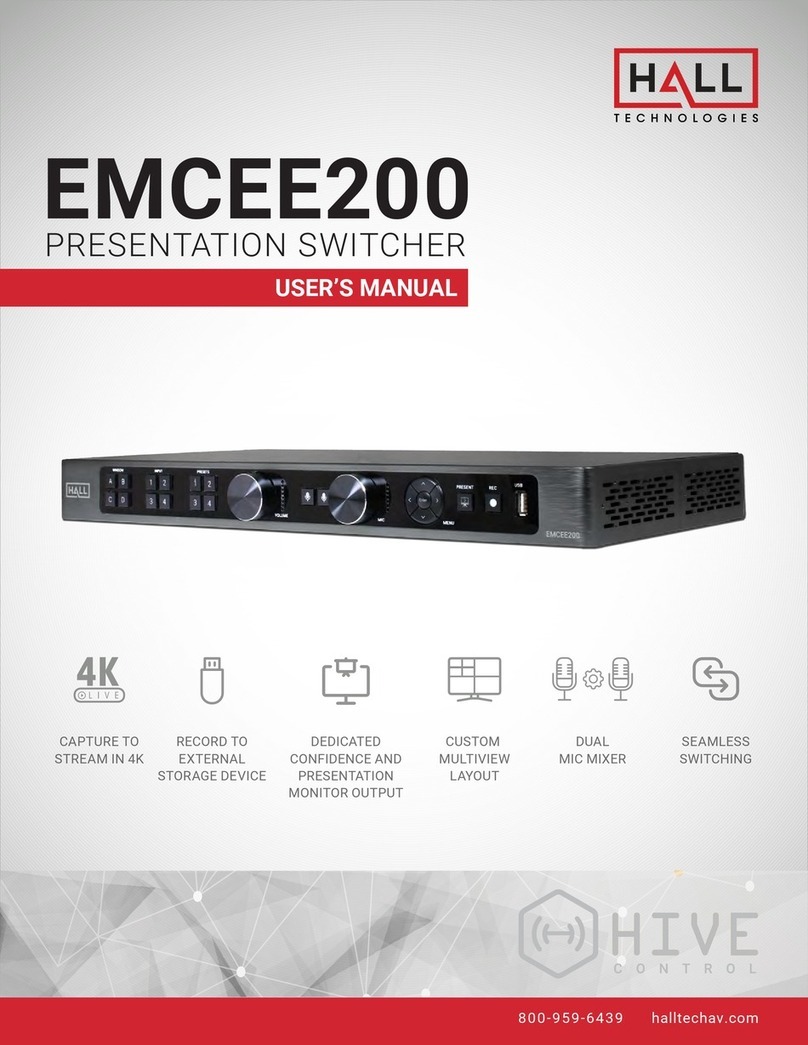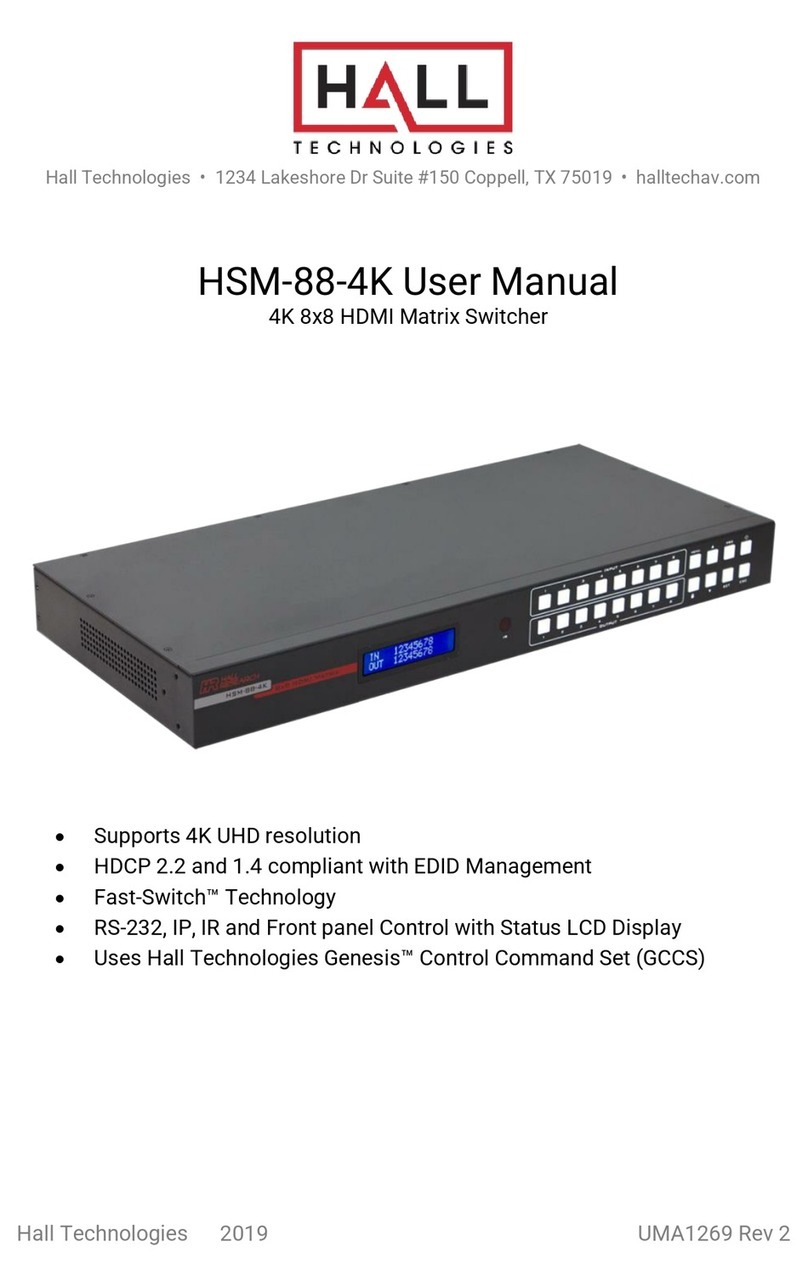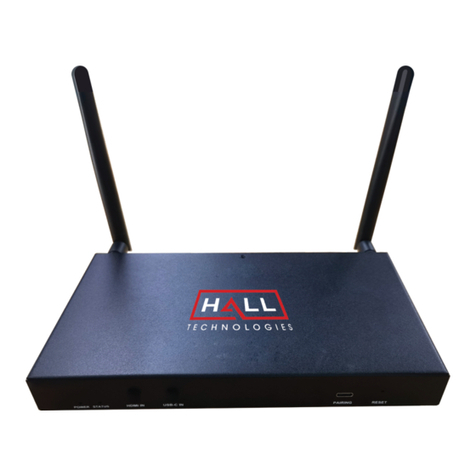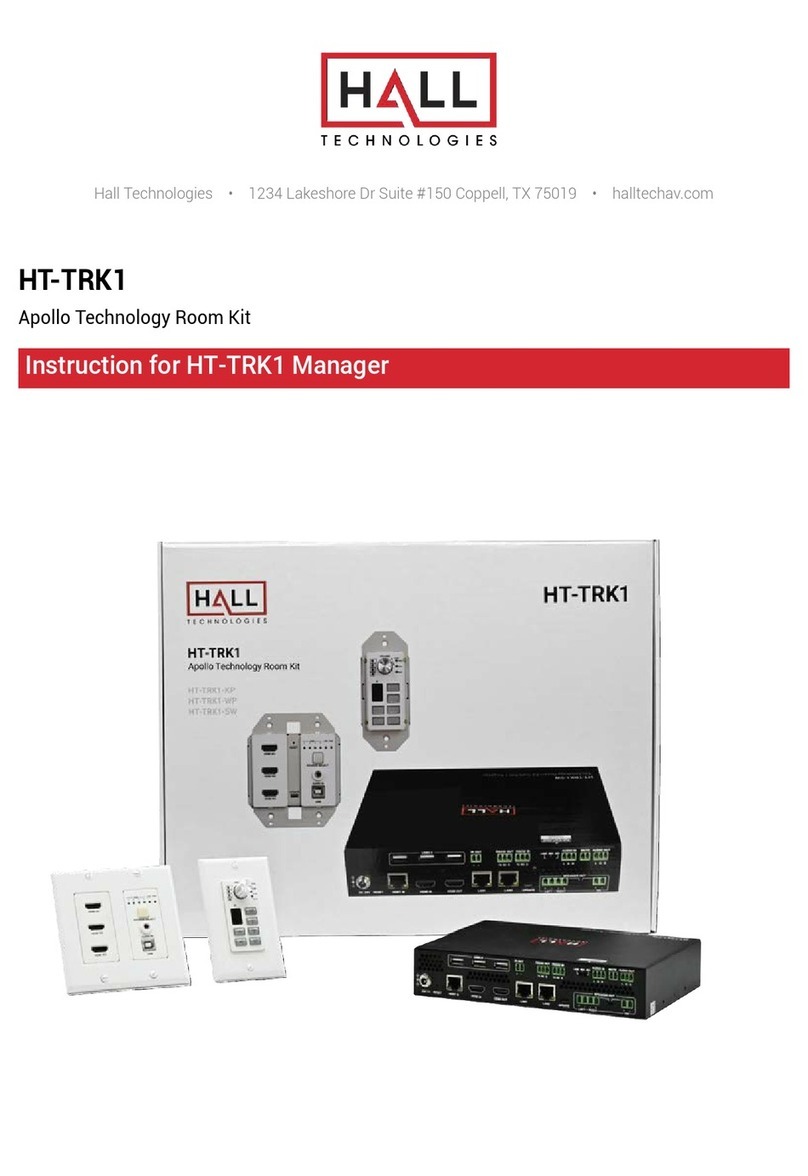Contents
1.0 Introduction...................................................................................... 4
1.1 General...................................................................................................... 4
1.2 Features .................................................................................................... 5
2.0 Package Contents ............................................................................ 6
3.0 Installation .......................................................................................7
3.1 Configuration............................................................................................7
3.1.1 Point-to-Point ................................................................................. 7
3.1.2 Point-to-Many (Splitter) and Many-to-Many (Matrix) ..................7
3.1.3 Setup............................................................................................... 8
4.0 Front and Rear panel..............................................................................10
4.1 Font Panel Operation .............................................................................11
4.1.1 Changing IP address from Front panel ......................................11
4.2 WebGUI ...................................................................................................12
4.3 Telnet Control.........................................................................................13
4.4 Dynamic Virtual Matrix Manager Tool ..................................................16
4.5 CNT-IP-264 .............................................................................................17
5.0 Features ......................................................................................... 18
5.1 Device ID .................................................................................................18
5.2 Group ID ..................................................................................................18
5.3 OSD Menu...............................................................................................19
5.4 RS-232.....................................................................................................19
5.4.1 Working ........................................................................................20
5.5 Serial Over IP (SoIP) from External Devices.........................................20
5.6 Fail-Safe (FS) Video Routing .................................................................21
5.7 IR .............................................................................................................22
5.8 Video Scaling and Bit Rate Control .......................................................22
5.8.1 Scaler and Encoder Settings.......................................................23
5.9 EDID.........................................................................................................23
5.10 Power over Ethernet (PoE) ..................................................................24
6.0 Firmware Upgrade..................................................................................25
6.1 Factory Default.......................................................................................25
7.0 FAQ & Troubleshooting .................................................................. 26
7.1 Contacting Hall Research ......................................................................27
8.0 Specifications................................................................................. 27
TRADEMARKS USED IN THIS MANUAL
Halle Technologies and its logo are trademarks of Hall Technologies. Any
other trademarks mentioned in this manual are acknowledged as the
property of the trademark owners.
































